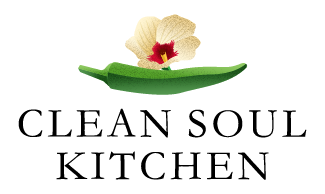Soul Superfoods: Collard Greens

Let's be clear: "Superfood" is a marketing term. There is no technical, dietary, or medical definition for the term, nor is there a system for certification. That being said, the nutritional value of some foods outweighs others, and some food are truly nutrient dense. Some of these foods are easily digested raw and others require cooking to be both digestible and to get the most benefit. And some so-called superfoods are absolute no-nos for folks with allergies or blood disorders like G6PD deficiency.
Many foods native to North America or imported and cultivated in the south are nutritional powerhouses that go over well with just about everyone. However, many of these plants did not provide enough calories and were 'fortified' with salty meats, heavy fats, and other not-so-good for your heart and blood sugar additives.
Luckily, we now have the option to enjoy these delicious foods and keep it healthy too. Rather than try and tackle the complete list at once, I'm going to take you on a bit of a deeper dive for some old favorites, as well as new varietals that I discover as I scour the country for the best heirloom growers and farmers.
Collard Greens
Collard greens, like Kale, are from the Cabbage family. Unlike Kale, Collards grow best in hot, humid climates, making it a distinctly Southern vegetable. Agricultural historians believe that Collards were bred in the 19th century, and until later in the 1800s were primarily eaten by the poor and so-called "upcountry" folk. The most noticeable difference between Collards and regular old cabbage is that it does not form a head - the leaves just keep branching out and growing. Collards are tough and resistant to bugs and disease, and grow well without too much intervention.
Collards are a nutrition powerhouse, boasting high levels of both fat and water soluble vitamins (A, B-1, B-5, B-6, C, and K), as well as minerals like potassium and fiber. The nutrient broth that results from slow cooking Collards in liquid is called "pot liquor", which in many a family is promoted as having almost magical health qualities. Collards are also a decent source of iron, though kale is a bit higher. Ironically, vitamins A and K are better absorbed by the body if consumed with fat, which is nice since Collards with a little fat are irresistible.
But of course, as with all foods, one man's cure can be another man's poison. Vitamin K aids in blood clotting, so consuming too much can have a negative health effect if you are on Warfarin or a blood thinner. Doesn't mean you can't enjoy this wondrous food - just not too much of it.
There are so many ways to enjoy Collards, from raw to cooked down. We eat this green, as well as many others, on a regular basis. Even the kids love them.
Collards are readily available nationwide (even up here where I have to go on a quest to find grits). I prefer to buy organic or farmstead greens. Check for broad, deep green leaves with firm stems and veins. They don't have to be perfect - if a little insect took a munch out here or there it's no big deal, but make sure the leaves are not wilted and weak and that the stems are not funky or slimy. Wash greens well before cooking or soaking. I don't mind the stem in slow cooked greens, but the stems have got to come out if serving raw. Remember that a little salt, vinegar, and fat on greens is magical.





